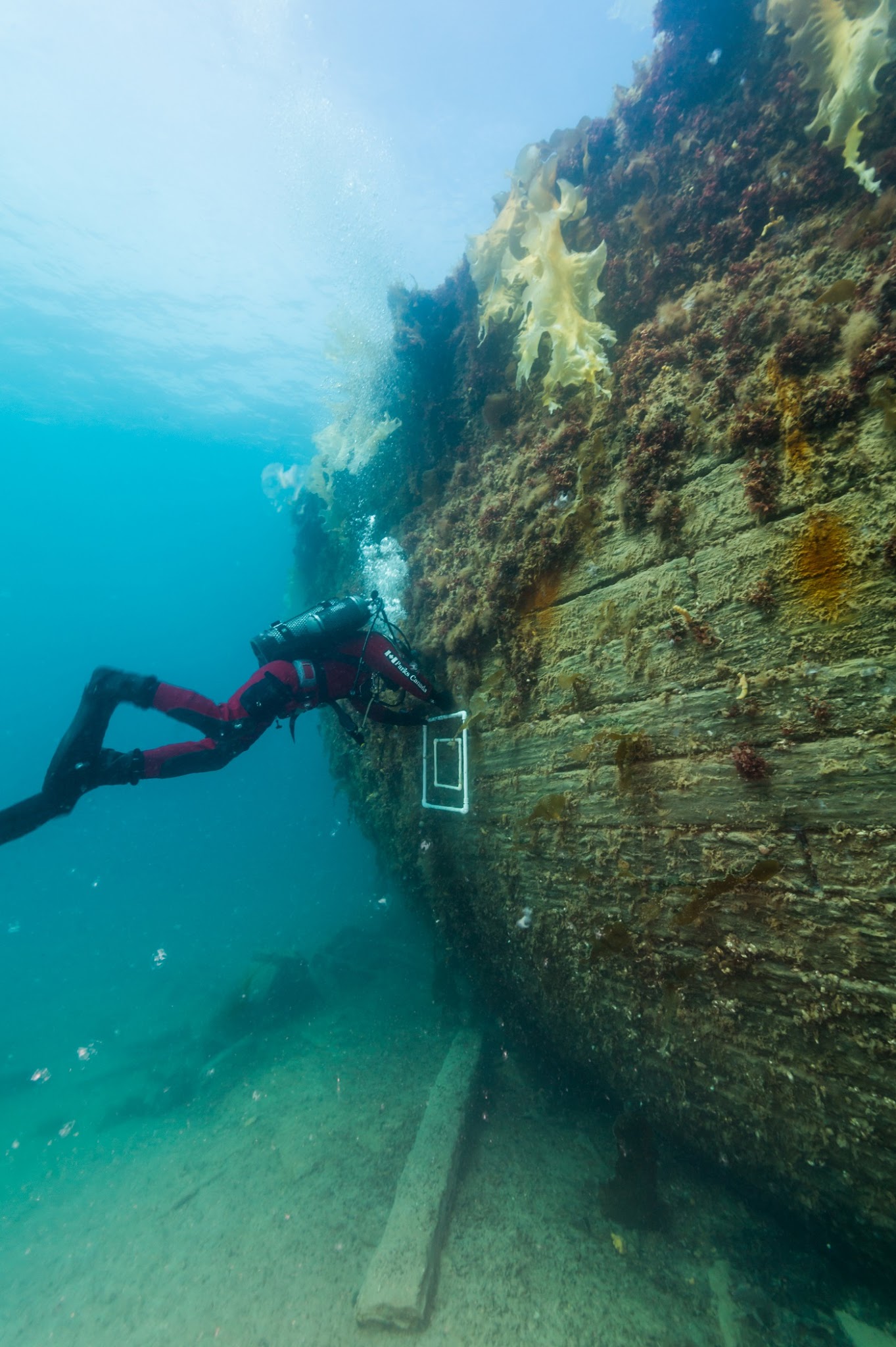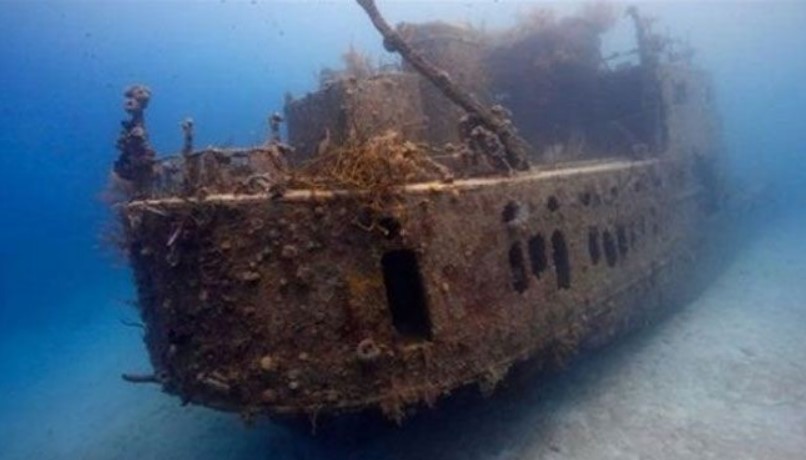Parks Canada expects to find human remains on Franklin ships
Voyaging Out of the Northwest Passage last September with Adventure Canada.
Day 3: Simpson Strait
“I expect to find human remains.” So said Marc-Andre Bernier this morning in response to a question about diving on the Erebus. “Most likely bones, skeletons.” He noted that Inuit testimony speaks of at least one body on what would appear to be Erebus, and added that he had seen flesh on bones before. Many artifacts on Erebus are covered in sediment, he said, “and if sedimented, the remains could be very well preserved.” Bernier cited the example of a wreck from 1770, the HMS Swift, which researchers located in Patagonia: “They found a complete skeleton in uniform.”
Since discovering the Erebus in 2014, Bernier said, Parks Canada has conducted more than 250 hours of diving – “open water, through the ice, and now we’re setting up to dive from a barge.” That barge arrived recently in Gjoa Haven. The top of the Erebus is just 10 feet below the surface of the water, and that has facilitated the initial exploration of the ship.
“Some of the deck planks are gone,” Bernier said, “and in some instances we have been able to peek inside to the lower decks.” Using state-of-the-art technology and computerized graphics, the underwater archaeologists have been able to create a three-dimensional, grid-system map of the wreck. From the headquarters of the Royal Marines, they have recovered shoes, ceramic pestles, and medicine bottles reused as shot glasses. Parks Canada has established a protected zone, a national historic site 10 kilometres square, around the Erebus. The Inuit guardians at the site, where yesterday three tents blew down, were being evacuated today.
The Erebus is not badly preserved, Bernier said, but the Terror – discovered just last year – “is in phenomenal condition.” There, researchers have identified a ship’s boat, a 23-foot cutter, sitting on the ocean floor directly under the davits designed to release it. They also identified two outhouses sitting on the top deck. To laughter, he said: “Imagine all the DNA samples in there.” He noted that the window over the officer’s mess is partly open. So far, the team has collected about ten hours of video, and the next step will be to introduce Remotely Operated Vehicles (ROVs) into the ship.
Just before lunch, many passengers went out on the top deck to stand in the wind – still gale force – and gaze out at King William Island. Those men who, in the late 1840s, abandoned Terror struggled along this coastline. On his 1857-59 expedition,
Leopold McClintock found the skeleton of one of the men who died here, and identified him as Thomas Armitage. After experiencing those winds, nobody with any sense harbored dreams of going ashore.
Late in the afternoon, with the wind still wailing at more than 20 knots, Matthew James made it official: we would attempt no landing. The sun came out and the Ocean Endeavour set off eastward through Simpson Strait, bound for Gjoa Haven. Passengers crowded onto the top deck and marvelled at the nearness of the shore, the narrowness of the strait.

